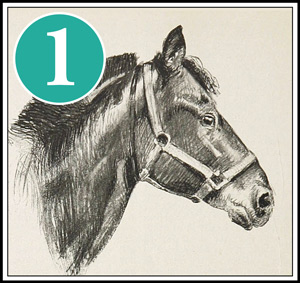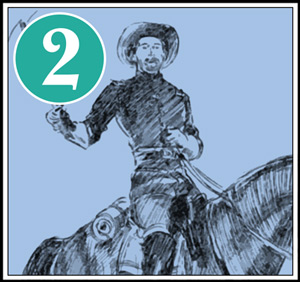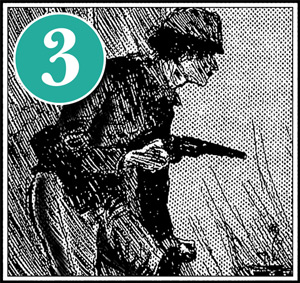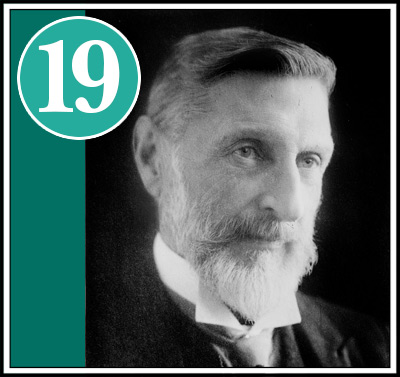
The Real King Solomon’s Mines
Episode 19•
The Real King Solomon’s Mines
• On the hill above, amidst the granite boulders, frowns the fortress, and all around stretch the foundation blocks of a dead city.
Podcast: Play in new window | Download
Subscribe: Apple Podcasts | Email | TuneIn | RSS

SHOW NOTES ____________
The Real King Solomon’s Mines
By Sir Henry Rider Haggard
OVER twenty years ago the spirit moved me to attempt a story of African adventure, and as a result I wrote the book called “King Solomon’s Mines.” Now, one of those old Romans who had such an extraordinary art of summing up gathered wisdom in a single sentence has informed us that books, like men, have their appointed destinies. Certainly, this is so. Thus, for King Solomon’s Mines I never expected any particular success; it was only a tale of adventure, and there seemed to be no reason why I should do so.
Indeed, if I remember right, this pessimistic attitude was shared by sundry publishers, who turned up their experienced noses at what has proved to be a sound investment in the way of fiction, until by chance it fell into the hands of the late Mr. W. E. Henley, who recommended it to Messrs. Cassell. Even when the manuscript found a publisher, I recollect, so small was my faith that I nearly disposed of the work outright for a small sum of money.
Yet King Solomon’s Mines has proved curiously successful. Nowadays, it is quite unusual for a novel or romance to live more than twelve months, even when its admirers have announced, as they do several times per season, that it is the book of the year, or perhaps the greatest of its kind that has been published for generations. Well, twenty-two years have gone by, and it still flourishes. Old ladies still buy it under the impression that it is a religious tale—I have seen it included in theological catalogues, even those of German origin—and other people, young and old, because it amuses them.
During my recent journey through America I met scarcely anyone who did not take the opportunity of informing me that he had read King Solomon’s Mines, but there, of course, it has been pirated by the million, and is, as I gathered from advertisements in the newspapers, frequently given away by grocers as flavoring to a pound of tea. In countries shackled by the Berne Copyright Convention, where folk must pay fourpence-halfpenny (at least) if they wish to make acquaintance with it in its cheapest form, of course its circulation is not so extensive. Still, it is large, and what is more, scarcely varies from year to year. Indeed, I have come to hope that in dim, unborn ages, when much better work, both of my own and other people’s, is clean forgotten, I shall still be remembered as a man who in the Victorian era wrote the well-known romance called King Solomon’s Mines, and some other equally popular tales. All this I say, not because I am in any way puffed up by these facts, but to show how very wise was that old Roman who enunciated the aphorism, Habent sua fata libelli.
So since this particular libellus has reached its majority, and seems set for a long life—for it is during infancy that the mortality among books of fancy is so terrible: if they grow up at all, they are apt to go on living—it may be worth while, in connection with the subject of this article, to say how I came to be able to bring about its birth.
When I was a lad and a public servant in Africa I met many men who have long ago passed away, the pioneers of settlement and exploration, or those who had first become acquainted with certain of the great savage races of the interior, ‘or who had helped to shape history when at length these races and the white man found themselves face to face? Being of an inquiring character, I collected from them information which afterwards enabled me to produce such books as “Nada the Lily ” or that which I am discussing.
Thus, although I think that Mr. Baines, one of the first wanderers in much of the country which is now Rhodesia, died shortly after I reached Natal, and I do not recall ever having spoken to him, I knew his family, and doubtless heard something of that country from them and others, with the result that it must haVe been ingrained in my mind that it had once been occupied by an ancient people.
How I came to conclude that this people was Phoenician I have now no idea, for I do not believe that anyone suggested this to me. Nor, to the best of my memory, did I ever at any time hear of the great ruin of Zimbabwe, or that the ancients had carried on a vast gold-mining enterprise in the part of Africa where it stands.
Still less did I know that diamonds existed elsewhere than at Kimberley; indeed, that fact has only been discovered within the last year or so. I introduced them only because they were more picturesque and easier to handle than gold.
When I wrote of Solomon’s Road I never guessed that the old-world Road of God, as I think that it is called, would be discovered in the Matoppos. When I imagined its mountains I was ignorant that they stand not far from the Tokwe River, guarding the gate to the Great Zimbabwe, near to which in truth, or so I believe, Solomon, or other ancient kings, had the mines that poured the gold of Ophir into their coffers.
I never knew of the ancient workings, so many of which have been found since, or of that hidden treasury with swinging doors of stone, which now is said to have an actual existence. All of these, so far as this and other books are concerned, were the fruit of imagination, conceived, I suppose, from chance words spoken long ago that lay dormant in the mind; of that imagination which in some occult way so often seems to throw a shadow of the truth.
But of the Matabele, who in the tale are named the Kukuanas, I did know something, even in those days. Indeed, I went very near to “knowing too much, for when in 1877 my dear friends, Captain Patterson and Mr. J. Sergeaunt, were sent by Sir Bartle Frere on an embassy to their king, Lobengula, I begged the Government of the Transvaal, whose servant I was at that time, for leave to accompany them. It was refused, as I could not be spared from my office. So I rode with them a few miles and returned.
Had I gone on, my fate doubtless would have been their fate, for Lobengula murdered them both very cruelly, also my two servants whom I had lent them, and poor young Thomas, the missionary’s son. The names of those two servants, Khivzr, the Bastard Zulu, and Ventvogel, the Hottentot, I have tried to preserve in the pages of King Solomon’s Mines. In life they were such men as are there described. But all this is another matter upon which I must not enter here.
So much for legends and romance. Now let us come to facts. If any reader will take the trouble to consult a modern map of central South Africa, he may see a vast block of territory bounded, roughly speaking, by the Zambesi on the north and the Transvaal on the south, by Barotse and Bechuanaland on the west and by Portuguese East Africa on the east, measuring, perhaps, six hundred miles square.
Over all this huge expanse are found spotted ancient ruins, whereof about five hundred are known to exist, while doubtless many more remain to be discovered. These ruins—in spite of the newest theories to the contrary, which are disputed by many experts—it would seem almost certain— or so at least have concluded my late friend, Theodore Bent, and other learned persons were built by people of Semitic race, probably Phoenicians, or to be more accurate, South Arabian Himyarites, a people rendered somewhat obscure by age. At any rate, they worshipped the sun, the moon, the planets, and other forces of Nature which need not be detailed, and took observations of the more distant stars. Also, in the intervals of these pious occupations, they were exceedingly keen business men. Business took them to South Africa, where they were not native, and business kept them there, until at last, while still engaged on business, or so it appears most probable, they were all of them slain.
Their occupation was gold mining, perhaps with a little trading in “ivory, almug trees, apes, and peacocks” (or ostriches) thrown in. They opened up hundreds of gold reefs, from which it is estimated that they extracted at least seventy-five million pounds’ worth of gold, and probably a great deal more.
They built scores of forts to protect their line of communication with the coast. They erected vast stronghold temples, of which the great Zimbabwe, that is situated practically in the centre of the block of territory delimitated above, is the largest discovered. They worshipped the sun and the moon, as I have said. They enslaved the local population by tens of thousands to labour in the mines and other public works; for gold-seeking was evidently their state monopoly.
They came, they dwelt, they vanished. That is all we know about them. What they were like, what were their domestic habits, what land they took ship from, to what land returned, how they spent their leisure, in what dwellings they abode, whither they carried their dead for burial —of all these things and many others we are utterly ignorant.
But Mr. Andrew Lang, with that fine touch of his, has put the problem in a little poem that once he wrote at my request for a paper in which I was interested at the time. so much better than I can do, that I will quote a couple of his verses.
“Into the darkness whence they came,
They passed, their country knoweth none;
They and their gods without a name
Partake the same oblivion.
Their work they did, their work is done;
Whose gold, it may be, shone like fire,
About the brows of Solomon,
And in the House of God’s Desire.
The pestilence, the desert spear,
Smote them: they passed, with none to tell
The names of them that labored there:
Stark walls and crumbling crucible,
Strait gates and graves, and ruined well,
Abide, dumb monuments of old;
We know but that men fought and fell,
Like us, like us for love of gold.”
The thing is strange, almost terrifying, to think of. We modern folk are very vain of ourselves. We can hardly conceive a state of affairs on this little planet in which we shall not fill a large part; when for practical purposes, excepting some obscure traces of blood, our particular race, the Anglo-Saxon, the Teutonic, the Gallic, whatever it may be, has passed away and been forgotten. Imagine London, Paris, Berlin, Chicago, and those who built them, forgotten! Yet such things may well come about. Indeed, there are forces at work in the world, though few folk give a thought to them, which seem likely to bring them about a great deal sooner than we anticipate.
Well, as we think to-day, so doubtless these Phoenicians, or Himyarites, or whoever they may have been, thought in their day. Remember, it must have been a great people that without the aid of steam or firearms could have penetrated, not peacefully we may be sure, into the dark heart of Africa, and there have established their dominion over its teeming millions of population.
Probably the struggle was long and fierce—how fierce their fortifications show, for evidently they lived the over-lords, the taskmasters of hostile multitudes—yes, multitudes and multitudes, for there are great districts in Rhodesia where, league after league, even the mountain sides are terraced by the patient, laborious toil of man, that every inch of soil might be made available for the growth of food. Yet these fierce traders broke their spirit and brought them under the yoke; forced them to dig in the dark mines for gold, to pound the quartz with stone hammers, and bake it in crucibles; forced them to quarry the hard granite and iron-stone to the shape and size of the bricks whereto they were accustomed in their land of origin, and, generation by generation, to build up the mighty immemorial mass of temple-fortresses.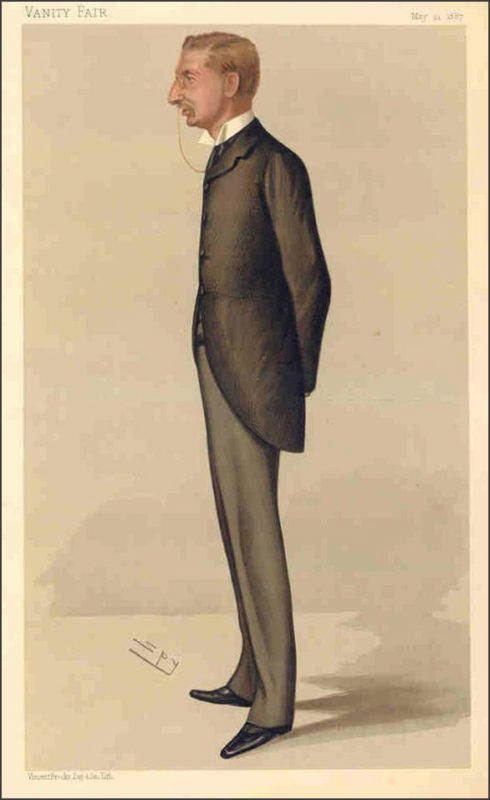
When did they do it? Whatever may be asserted, no one really knows; but from the orientation of the ruins to the winter or the summer solstice, or to northern stars, scholars think that the earliest of them were built somewhere about two thousand years before Christ. And when did they cease from their labours, leaving nothing behind them but these dry-built walls—for although they were proficient in the manufacture of cement they used no mortar— and the hollow pits whence they had dug the gold, and the instruments with which they treated it ? That no scholar can tell us, though many scholars have theories on the matter. They vanished. That is all. Probably the subject tribes, having learned their masters’ wisdom, rose up and massacred them to the last man, and in those days there was no historian to record it and no novelist to make a story of the thing.
Solemn, awe-inspiring, the great elliptical building of Zimbabwe still stands beneath the moon, which doubtless was worshipped from its courts. In it are the altars and the sacred cone where once the priests made prayer, or perchance offered sacrifice of children to Baal and to Ashtaroth.
On the hill above, amidst the granite boulders, frowns the fortress, and all around stretch the foundation blocks of a dead city. Here the Makalanga, of whom I have written in “Benita “—that is, the People of the Sun, descendants, without doubt, of the Semitic conquerors and the native races—still make offerings of black oxen to the spirits of their ancestors, or did so till within a few years gone.
The temple, too—or so they hold—is still haunted by the spirits; none will enter it at night. But of the beginning of it all these folk know nothing. If questioned, they say only that the place was built by white men “when stones were soft”—that is, countless time ago.
What a place it must have been when the monoliths and the carven vultures, each upon its soapstone pillar, stood in their places upon the broad, flat tops of the walls; when the goldsmiths were at work and the merchants trafficked in the courts ; when the processions wound their way through the narrow passages, and the white-robed, tall-capped priests did sacrifice in the shrines!
Where did they bury their dead, one wonders ? Of these as yet no cemetery has been found. Perhaps they cremated them and cast their ashes to the winds. Perhaps they embalmed them, if they were individuals of consequence, and sent them back to Arabia or to Tyre, as the Chinese do today, while humbler folk were cast out to the beasts and birds. Or perhaps they still lie in deep and hidden kloofs among the mountains.
This at least is evident: that during long centuries of Occupation—for all these ruins reveal various periods of building that must have been separated by ‘great stretches of time—the dead were many.
Indeed, a few have been found—not at the Great Zimbabwe—but at Mundie, at Chum, and at Dhlo-dhlo. These were interred beneath the granite cement of the floors, perhaps under the dwelling of the deceased, who was laid on his side with his head resting upon a stone or wooden pillow of the ancient Egyptian pattern, earthenware pots standing about him, his gold ornaments still upon his person, and cakes of gold within his pouch to pay the expenses of his last long journey. If he were a high official also, his gold headed and gold-ferruled rod of office was laid in the tomb with him.
One of these departed, who dwelt, or at any rate was buried, at Chum, was a giant. Messrs. Hall and Neal say that he was over seven feet high, his shin bone being more than two feet in length. As much as seventy-two ounces of gold have been found buried with a single ancient, and at Dhlo-dhlo my friend Major Bumham, D.S.O., found more than six hundred ounces of that metal, nearly all of it, I think, manufactured. Also he found skeletons, and within them arrow-heads, showing how they met their deaths, some of which arrow-heads I still have, though whether these date from ancient or from medieval times I cannot say.
Ages and ages after the ancients had been destroyed or left the country, there was another empire here—that of Monomotapa—and semi-savage kings, of whom Mr. Wilmot tells us in his book, held their courts in the Zimbabwes. The Portuguese used to fight with these people and to send missionaries to make Christians of those who survived.
Thus from documents preserved in the Vatican it appears that in 1628 one Brother Louis, having defeated the Emperor and his army of a hundred thousand men, went on to the Great Zimbabwe, “the court of the King, and there,” he says, “I built a little church and put up a crucifix I had brought with me and a statue of the Blessed Virgin of the Rosary.”
Sixty or seventy years before this also Father Gonsalvo Silvera was murdered by the Emperor of Monomotapa under circumstances which would be well worth relating if I had the space. Two generations later Father Alphonsus, travelling up the Zambesi, into a tributary of which the body was thrown, alleges that he was shown a place where it still lay uncorrupted. He could not visit it, however, as—the report went—it was carefully guarded by tigers which fifty years before had carried the sacred corpse into a wood.
But of these Zimbabwes, ancient and medieval, the legends are endless. Now they are the heritage of the Anglo-Saxon race. Major Wilson and his companions who fell fighting against innumerable odds on the banks of the Shangani, lie within the shadow of their walls, which still wrap the secrets of those who built them in timeworn and impenetrable silence.
• • • • • • • • • • • • • • • • • • • • • • • • • • • • • •
By subscribing, you will automatically receive the latest episodes downloaded to your computer or portable device. Select your preferred subscription method above.
To subscribe via a different application: Go to your favorite podcast application or news reader and enter this URL: https://clearwaterpress.com/byline/feed/podcast/

